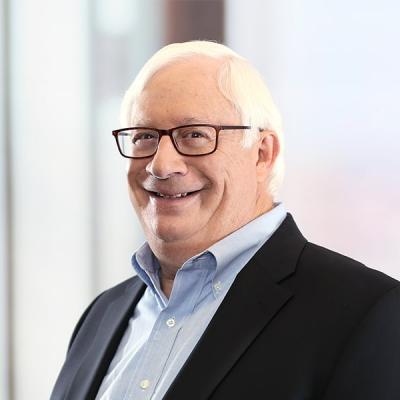Federal Court Relies on “Evolving Landscape of Health Care” Post-Affordable Care Act to Reject FTC Challenge to Hospital Merger
Judge takes “the healthcare world as it is, and not as the FTC wishes it to be.”
“We find it no small irony that the same federal government under which the FTC operates has created a climate that virtually compels institutions to seek alliances such as the Hospitals intend here. Like the corner store, the community medical center is a charming but increasingly antiquated concept. It is better for the people they treat that such hospitals unite and survive rather than remain divided and wither.”
Such is the conclusion of the U.S. District Court for the Middle District of Pennsylvania in FTC v. Penn State Hershey Medical Center, 1:15-cv-02362 (M.D. Penn May 9, 2016), in which it denied the Federal Trade Commission’s (“FTC”) request for a preliminary injunction to block the pending merger of Penn State Hershey Medical Center (“Hershey”) and PinnacleHealth System (“Pinnacle”).
The decision highlights the tension between, on the one hand, federal antitrust enforcers’ belief that competition among many small competitors remains the key to lower healthcare costs and, on the other, the Affordable Care Act’s drive to lower costs and achieve better health outcomes through shared risk and population health management. The decision is a major setback for the FTC view. Also dispositive was the relevant geographic market definition — a frequent challenge for the FTC in hospital merger cases going back to the 1990s — and a battle the FTC again lost here.
Background
The health care industry saw an increase in hospital and physician merger activity following the passage of The Patient Protection and Affordable Care Act (the “Affordable Care Act” or “ACA”) in 2010. Consolidating parties frequently argue that mergers are necessary to achieve the ACA’s goals of containing costs and improving quality through provider collaboration. The FTC has consistently argued otherwise, with FTC Chairwoman Edith Ramirez arguing in April that the ACA encourages competition, not consolidation.[1] She similarly wrote in 2014 that critics who “claim that active enforcement of antitrust laws undermines efforts to contain costs through provider collaboration and is therefore at odds with the policy aims of the Affordable Care Act” misunderstand the crucial role that competition plays in the health care sector.[2] Until now, the FTC has found support for its position in the courts.
In 2014, Hershey and Pinnacle entered into a letter of intent to combine their assets. The FTC filed an administrative complaint to block the merger in December 2015, alleging that the transaction violates Section 7 of the Clayton Act and Section 5 of the FTC Act. In the Matter of The Penn State Hershey Medical Center and PinnacleHealth System, FTC Docket No. 9368 (Dec. 7, 2015). The FTC, jointly with the Pennsylvania Office of the Attorney General, also filed a complaint in the U.S. District Court for the Middle District of Pennsylvania in December, and then this motion for preliminary injunction in March. A merits trial in the FTC administrative proceeding is scheduled to begin May 17, 2016.
Hershey is a leading academic medical center (“AMC”) in Hershey, Pennsylvania. It offers a broad array of high-acuity services, and tertiary and quaternary care. Pinnacle is a not-for-profit health system with three community hospitals in the Harrisburg, Pennsylvania area. The FTC alleged that the two health systems compete head-to-head, offering overlapping high-quality primary, secondary, tertiary, and quaternary services. The FTC also asserted that only one other general acute care hospital in the area is of any competitive significance, and thus the transaction would reduce the number of meaningful competitors from three to two. According to the FTC, the combined entity post-merger would account for approximately 64% of all general acute care services in the Harrisburg area. The FTC further alleged that the merger is presumptively unlawful under the 2010 Merger Guidelines with a post-merger market concentration HHI measure of 4,500 and an increase of 2,000 points.
District Court’s Opinion
In assessing whether to grant an FTC Act Section 13(b) preliminary injunction, the court must (1) determine the likelihood that the FTC will ultimately succeed on the merits, and (2) balance the equities. Section 7 of the Clayton Act prohibits mergers that may substantially lessen competition or tend to create a monopoly.
Relevant Market
The first step in a Clayton Act analysis is to define the relevant market, which consists of both a product market and a geographic market. The parties in this matter agreed that the relevant product market was general acuity services (“GAC”) sold to commercial payors. At dispute was the appropriate relevant geographic market. “The relevant geographic market is the area in which a potential buyer may rationally look for the goods or services he or she seeks.” Hanover 3201 Realty, LLC v. Vill. Supermarkets, Inc., 806 F.3d 162, 183-84 (3d Cir. 2015). Arguing that the geographic market for GAC services are “inherently local” because people want to be hospitalized near home, the FTC contended that the relevant geographic market was the “Harrisburg Area,” which is “roughly equivalent to the Harrisburg Metropolitan Statistical Area (Dauphin, Cumberland and Perry Counties) and Lebanon County. Hershey is located in Dauphin County. The hospitals disagreed, arguing that the FTC’s geographic market is too narrow and ‘is untethered to the commercial realities facing patients and payors.’”
As is common in merger cases, the resolution of the relevant geographic market was dispositive in this case. Particularly important here was the uncontroverted facts that in 2014, 43.5% of Hershey’s patients (11,260 people) travelled to Hershey from outside the FTC’s alleged “Harrisburg Area” market, that half of Hershey’s patients travelled at least thirty minutes for care, and 20% travelled over an hour for care. The district court concluded that these facts “controvert the FTC’s assertion that GAC services are ‘inherently local,’ and strongly indicate that the FTC has created a geographic market that is too narrow.”
The district court also found that the FTC did not properly take into account the “realities of living in Central Pennsylvania,” such as the 19 hospitals within a 65 minute drive of Harrisburg which “provide a realistic alternative that patients would utilize” in the largely rural area. This, combined with the “extremely compelling” fact that the hospitals had executed 5- and 10-year contracts with the region’s two largest payors to maintain existing rates and preserve the rate-differential between the hospitals, suggested that the merger would not result in increased prices for at least five years. The FTC was essentially asking for a prediction of what might happen to negotiating positions and rates in five years — something the district court found to be imprudent to do “[i]n the rapidly-changing arena of healthcare and health insurance.”
The FTC’s four county “Harrisburg Area” relevant geographic market was thus found to be “unrealistically narrow and [did] not assume the commercial realities faced by consumers in the region.”
Equities
The district court next turned to what would have been the hospitals’ burden — to clearly show that the merger would not cause anticompetitive effects — had the FTC demonstrated a likelihood of ultimate success.
The hospitals successfully argued that the alleviation of Hershey’s capacity constraints as a result of the merger was a compelling efficiency in support of the transaction. The district court stated that “efficiencies wrought by the merger would provide beneficial effects to the public, such that equitable considerations weigh in favor of denying the injunction.” The hospitals presented evidence that the optimal occupancy rate is approximately 85%, and Hershey’s routinely climbed as high as 112-115%. Without the merger, Hershey intended to construct a new tower that would cost approximately $277 million to create space for an additional 100 inpatient beds. The FTC countered that Hershey needed far fewer beds to alleviate its capacity issue, and that Hershey was inflating the cost of the new construction. The hospitals prevailed in this argument, with the district court noting that the merger would immediately make additional capacity available.
The hospitals’ case was also bolstered by extensive repositioning in the relevant market that would constrain any price increase from the merged entity. Several other recent acquisitions by competing hospitals had already occurred with the intent to erode Hershey’s patient base. The district court concluded that “[r]ather than monopolizing a geographic space, merging allows Hershey and Pinnacle to remain competitive.”
The trend toward risk-based contracting which transfers the risk for the cost of care for the individual to providers also strengthened the hospitals’ position. Testimony had been presented that “in order to perform best under risk-based contracting, hospitals must offer a ‘total continuum of care.’” Although it agreed with the FTC that the merging hospitals could independently operate under the risk-based model, the district court nonetheless found the testimony of Hershey’s CEO persuasive that “there will be some advantages in terms of size of scale, in terms of being able to spread of costs [sic] of the infrastructure of population health over a larger health care system.”
Finally, the district court addressed the public interest in effective enforcement of the antitrust laws, explaining:
After a thorough consideration of the equities in play, we find that the majority of these factors weigh in the public interest. The patients of Hershey and Pinnacle stand to gain much from a combined entity that is capable of competing with a variety of other merged and already growing hospital systems in the region. This decision further recognizes a growing need for all those involved to adapt to an evolving landscape of healthcare that includes, among other changes, the institution of the Affordable Care Act, fluctuations in Medicare and Medicaid reimbursement, and the adoption of risk-based contracting. Our determination reflects the healthcare world as it is, and not as the FTC wishes it to be. We find it no small irony that the same federal government under which the FTC operates has created a climate that virtually compels institutions to seek alliances such as the Hospitals intend here. Like the corner store, the community medical center is a charming but increasingly antiquated concept. It is better for the people they treat that such hospitals unite and survive rather than remain divided and wither.
Conclusion
It remains to be seen whether this decision will be of lasting value to health care providers considering mergers and other forms of consolidation. An appeal by the FTC is highly likely in order to protect its prior wins and to rebut the notion that the Affordable Care Act is a free pass for consolidation in the health care industry. But the case certainly provides the first acceptance by a court of the notion that the changing health care landscape — including the ACA — creates a need to consolidate in order to reduce costs. Despite this loss, the FTC will not be easily moved off of its position that “the ACA neither requires nor encourages providers to merge or otherwise consolidate.”[3]
Update
As anticipated, the FTC filed a motion on May 10, 2016 in district court to enjoin the transaction pending an emergency appeal to the Third Circuit. On May 24, 2016, the Third Circuit granted the FTC’s request for a stay pending the appeal. The Third Circuit set an expedited schedule, with briefing to be completed in June and arguments to be held the week of July 25.
Endnotes
1 See FTC’s Ramirez Says Health Care Providers Can Compete Under Health Law, Washington Health Policy Week in Review (Apr. 11, 2016), available at http://www.commonwealthfund.org/publications/newsletters/washington-health-policy-in-review/2016/apr/april-11-2016/ftcs-ramirez-says-health-care-providers-can-compete-under-health-law.
2 See Antitrust Enforcement in Health Care – Controlling Costs, Improving Quality, The New England Journal of Medicine (Dec. 11, 2014), available at http://www.nejm.org/doi/full/10.1056/NEJMp1408009.
3 Julie Brill, former FTC Commissioner, Competition in Health Care Markets, HealthAffairsBlog, available at http://healthaffairs.org/blog/2015/01/26/competition-in-health-care-markets/.
Authors
Bruce D. Sokler
Member / Co-chair, Antitrust Practice
Robert G. Kidwell
Member

Dionne Lomax



